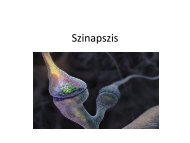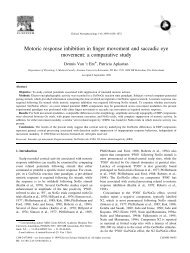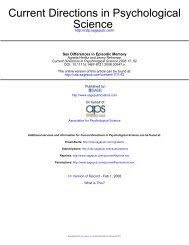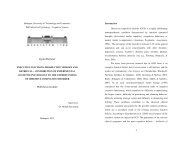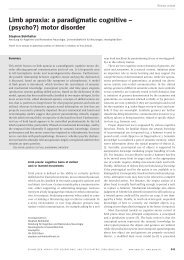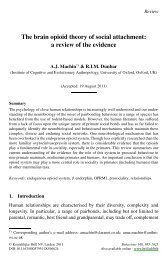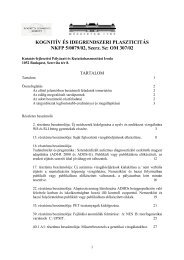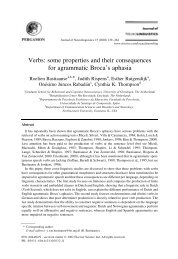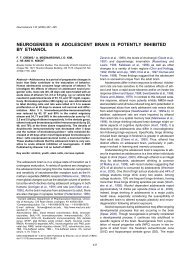Gyula Demeter
Gyula Demeter
Gyula Demeter
You also want an ePaper? Increase the reach of your titles
YUMPU automatically turns print PDFs into web optimized ePapers that Google loves.
elaboration of a series of tasks in use in today`s clinical and experimental setting. Probably<br />
the most well-known ones are the Letter-Number Span Test (Gold, Carpenter, Randolph,<br />
Goldberg, & Weinberger, 1997) and the N-back Test (Callicott et al., 1998). These tests<br />
beside the simple storage of incoming information require also a dynamic maintenance and<br />
manipulation of representations, which tapes the executive component of working memory.<br />
Duncan’s goal neglect theory<br />
In his theory Duncan (Duncan, 1986, 1995; Duncan &Owen, 2000; Duncan et al., 2000)<br />
argues that our behavior is guided by a set of goals and subgoals organized in a hierarchical<br />
pattern. The human behavior is goal oriented and our goals help us accommodate to the<br />
external and internal demands controlling the behavior by activation or by inhibition. Faced<br />
with a new task at the first stage of executive processing we analyze it and determine the<br />
goals and subgoals, weighting them and establishing a hierarchical plan of action which then<br />
will be carried out. Performance then will be monitored and evaluated in order to allow<br />
modifications if necessary. Patients with frontal lobe damage often fail to realize intended<br />
goals, which Duncan called “goal-neglect”: the subjects are able to describe the tasks<br />
requirements, but during completion ignore them.<br />
The authors had proposed that fluid intelligence as characterized by Spearman’s g factor<br />
(1927) depends on the frontal lobe functions Patients with frontal lesions who achieved<br />
higher scores on the Wechsler Intelligence Test scored significantly lower on the fluid<br />
intelligence test, focused on problem solving (Duncan, Burgess, & Emslie, 1995).<br />
Functional neuroimaging studies (Ducan & Owen, 2000; Duncan, 2006) discovered a<br />
common brain activity pattern, called the multiple demand system (MD) during very different<br />
cognitive tasks. This specific activity pattern involves the posterior part of the inferior frontal<br />
sulcus, the anterior insula and adjacent frontal operculum, the pre-supplementary motor area,<br />
the adjacent dorsal anterior cingulated and the intraparietal sulcus (Duncan, 2010). A similar<br />
activity pattern can be seen during problem solving tasks taping fluid intelligence<br />
(Prabhakaran et al., 1997; Duncan et al., 2000).<br />
The MD cortex plays a crucial role in defining and controlling parts of mental programs<br />
which helps us to achieve different set of goals. According to Duncan (2010) while we are<br />
learning new tasks, the processes of fragmenting and assembling different parts of it enables<br />
strong MD activity.<br />
12




